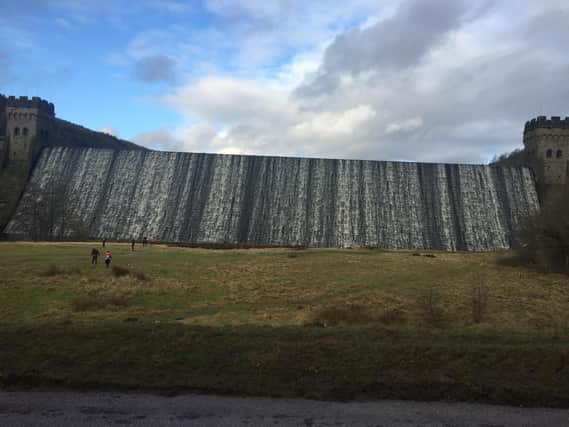Peaceful Derbyshire reservoir where pilots practised for the famous WW2 Dambusters Raid


Today the Derwent Dam is one of the region’s top beauty spots.
Stretching over six miles along the base of the dam tower, it is popular with hikers, cyclists, and nature lovers.
Advertisement
Hide AdAdvertisement
Hide AdVisitors may flock to Derwent Dam seeking a slice of peaceful paradise now.
However, the scene was markedly different 81 years ago.
The reservoir was used by pilots practising flights under Operation Chastise, otherwise known as The Dambusters’ Raid.
The RAF’s celebrated 617 Squadron was seeking a landscape similar to dams in Germany.
The Peak District dams that were constructed in deep valleys in the early 1900s were similar in layout to three dams in Germany.
Advertisement
Hide AdAdvertisement
Hide AdThe German dams were fiercely guarded by torpedo nets in the water to halt underwater attacks and anti-aircraft guns against airborne enemy bombers.
The pilots used the Peak District location to trial their low-level flights to prepare for the 1943 raid on the dams of the German Ruhr.
Aircraft of any kind will create some form of disturbance and this was definitely the case in 1943.
As reported by BBC, farmers reportedly complained about noisy low-flying Lancaster bombers disturbing livestock in fields, not knowing the pilots were aiding the British war effort.
Read more: What's On in Derby?
The Dambusters’ Raid took place on May 16, 1943.
Advertisement
Hide AdAdvertisement
Hide AdAs reported by Imperial War Museums, Wing Commander Guy Gibson led 617 Squadron of the Royal Air Force on an audacious bombing raid to destroy the dams in the Ruhr valley, the industrial heartland of Germany.
The raid was widely celebrated as a British victory.
Of the 133 aircrew that took part, 53 men were killed and three became prisoners of war.
The surviving aircrew of 617 Squadron were lauded as heroes, establishing them as a specialist precision bombing unit experimenting with new bomb trials, target marking techniques and colossal new 'earthquake' bombs developed by Barnes Wallis.
An eponymously titled film based on the Dambusters’ Raid was released in 1955 and included footage from the valley.
Advertisement
Hide AdAdvertisement
Hide AdDerwent Reservoir today
Today, the twin-towered dam is said to be a magnificent sight when the water cascades over it.
There is even a Dambusters’ Family Walk where people can walk one mile and explore the Upper Derwent Valley route.
The dam’s strong historical significance continues to be commemorated in the 21st century by frequent flypasts being staged at the reservoir.
Advertisement
Hide AdAdvertisement
Hide AdThis includes a unique flypast in September 2014 that took place with the two remaining airworthy Lancasters, one from the Battle of Britain Memorial Flight, and one from Canada, flying three passes in formation.
A memorial stone paying tribute to the crews of 617 Squadron was also unveiled on Derwent Dam’s west tower in 1988.
Comment Guidelines
National World encourages reader discussion on our stories. User feedback, insights and back-and-forth exchanges add a rich layer of context to reporting. Please review our Community Guidelines before commenting.
